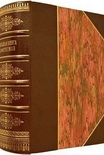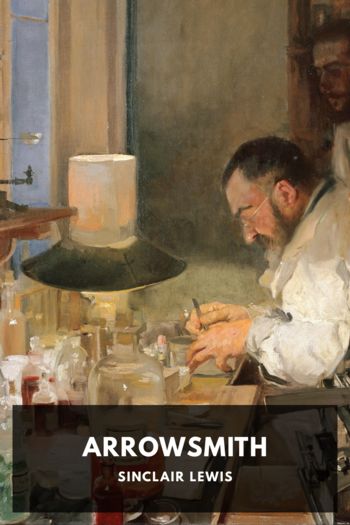Holocaust: The Nazi Persecution and Murder of the Jews, Peter Longerich [essential books to read TXT] 📗

- Author: Peter Longerich
Book online «Holocaust: The Nazi Persecution and Murder of the Jews, Peter Longerich [essential books to read TXT] 📗». Author Peter Longerich
Immediately after the National Socialist triumph in the Saar Plebiscite of 13
January, when 90 per cent of voters opted for reunion with Germany, the
foreign-policy considerations that had so far militated against the pursuit of radical
anti-Jewish persecution no longer seemed to Party activists to be relevant. As part
of the boycott Party activists organized demonstrations, smashing windows
and assaulting Jews. These operations were focused in Pomerania, Hesse, the
Rhineland, and Franconia. Alongside attacks on Jewish businesses and their
proprietors the activists also targeted so-called ‘race defilers’. Since the end of
Segregation and Discrimination, 1935–7
55
1934 there had been increasing demands from within the Party for legal measures
to prevent marriages or sexual relationships between Jews and non-Jews. 3
These unofficial steps were accompanied by measures sponsored by the state.
When the Gestapo banned the raising of the swastika by Jews in February 1935, the
Reich Minister of the Interior felt obliged to sanction this ruling by issuing a
decree, which he did on 27 April. 4 Jews were excluded from the call-up to military service, initiated in May of that year. 5 In addition all émigrés returning to Germany, whether Jews or non-Jews, were sent to internment camps from the
beginning of 1935.6
At the end of April the instances of anti-Semitic violence began to diminish.
There were doubts expressed in various quarters about continuing operations that
had not led to changes in how the general public shopped and which had been met
with widespread criticism and opposition from the populace at large. 7
There were evidently also foreign-policy considerations in play. The government
was anxious to overcome what was by then its almost complete isolation on the
international scene after the formation of the ‘Stresa Front’, the joint diplomatic
reaction of France, Britain, and Italy to the German reintroduction of compulsory
military service. Germany was particularly concerned to improve its relations with
Great Britain. Hitler’s Reichstag speech of 21 May, in which he announced the
Reich’s wish for peaceful coexistence with other nations and its willingness to seal
non-aggression pacts, signalled a phase of détente in questions of foreign affairs. At
the same time, negotiations with the British government were taking place, the
source of much disquiet amongst the British public, which ended on 18 June with
the signing of the Anglo-German Naval Agreement. In the period from the middle
of April to the middle of June, therefore, further anti-Jewish violence would have
put the foreign policy of the ‘Third Reich’ at some considerable risk. 8
Whilst the violence continued to recede in the main areas of unrest from the
end of April to the middle of May, by the end of May a second series of anti-Jewish
operations was beginning in other areas, intensifying in June and reaching a high
point in July 1935. The month of May presents a very uneven picture, therefore,
since the first phase of violence was receding in some areas whilst the second was
beginning in others. 9
This unrest came to a climax with serious anti-Semitic violence in Munich at
the end of May. There were open confrontations between members of the SA and
SS on the one side and the police on the other. The reactions of high-ranking
National Socialists demonstrate how inconvenient the government found these
spectacular anti-Jewish incidents at this point. 10 The Reichsführer of the SS
(Himmler), the Führer’s Deputy (Hess), the Gauleiters of Cologne (Grohé) and
Hessen-Nassau (Sprenger) all made public declarations of opposition to these
‘individual operations’. 11
In July the Party organization in Berlin made a renewed attempt to radicalize
anti-Semitic policies by means of a wave of terror ‘from below’. 12 Members of the 56
Racial Persecution, 1933–1939
Hitler Youth had been organizing demonstrations outside Jewish businesses and
restaurants since the beginning of June, and they spread rapidly throughout the
city. The anti-Jewish mood had also been stoked up very significantly in a speech
by Goebbels, who was also Gauleiter of Berlin, at the 30 June Party rally.
The situation escalated when the Berlin newspaper edited by Goebbels, Der
Angriff, which was as rabidly aggressive as its name suggests, made an open appeal
on 15 July for people to take physical action to prevent disruptions to a Swedish
anti-Semitic film supposedly initiated by Jewish cinema-goers. On that evening
there were riots on the Kurfürstendamm during which NS activists forced their
way into cafés and forcibly drove out Jewish customers, and these ended in
confrontations with the police. The events attracted the attention of the inter-
national press and led to the dismissal of the Chief of the Berlin Police Force, von
Levetzow. Goebbels seized the initiative, issued a ban on the very acts of violence
that he had himself been partly responsible for encouraging, and managed to
restore at least a superficial level of goodwill between the police, the city author-
ities, the Gau leadership, and the SA, with a slogan promising the systematic
cleansing of Berlin of ‘Communists, Reactionaries, and Jews’. 13 The violence in Berlin was the starting gun for a new anti-Semitic propaganda campaign that now
extended across the whole of the Reich.
The reports of the Centralverein, the Gestapo, the SPD in exile, and other
sources show quite clearly that NS activists were once more carrying out large-
scale anti-Jewish operations across the Reich from mid-July onwards. Regional
centres for this violence were the Rhineland, Westphalia, Hesse, Pomerania, and
East Prussia. 14 The list of the techniques typically employed includes blockading and obstructing Jewish businesses, threatening customers who tried to get past
these measures, driving Jews from public swimming pools, smashing windows and
daubing shopfronts with paint, desecrating Jewish cemeteries and synagogues,
putting up anti-Jewish signs, and preventing the sale of goods to Jews. ‘Race
defilers’ often had to be taken into protective custody by the Gestapo after attacks
by Party activists. In many places Jewish economic life was destroyed altogether by
the end of the summer as a result of these large-scale hate campaigns.
Radical forces within the Party made an attempt to make a link between the
wave of anti-Jewish sentiment and a general reckoning with all ‘enemies of the
state’ still present in Germany. Thus in many cities Party activists organized
demonstrations against supposedly anti-social businessmen and senior officials
who refused to bow to the demands of local Party bosses. 15 The newspaper Der Stürmer, edited by the radical Nuremberg Gauleiter, tried in June to summarize
the whole campaign in





Comments (0)